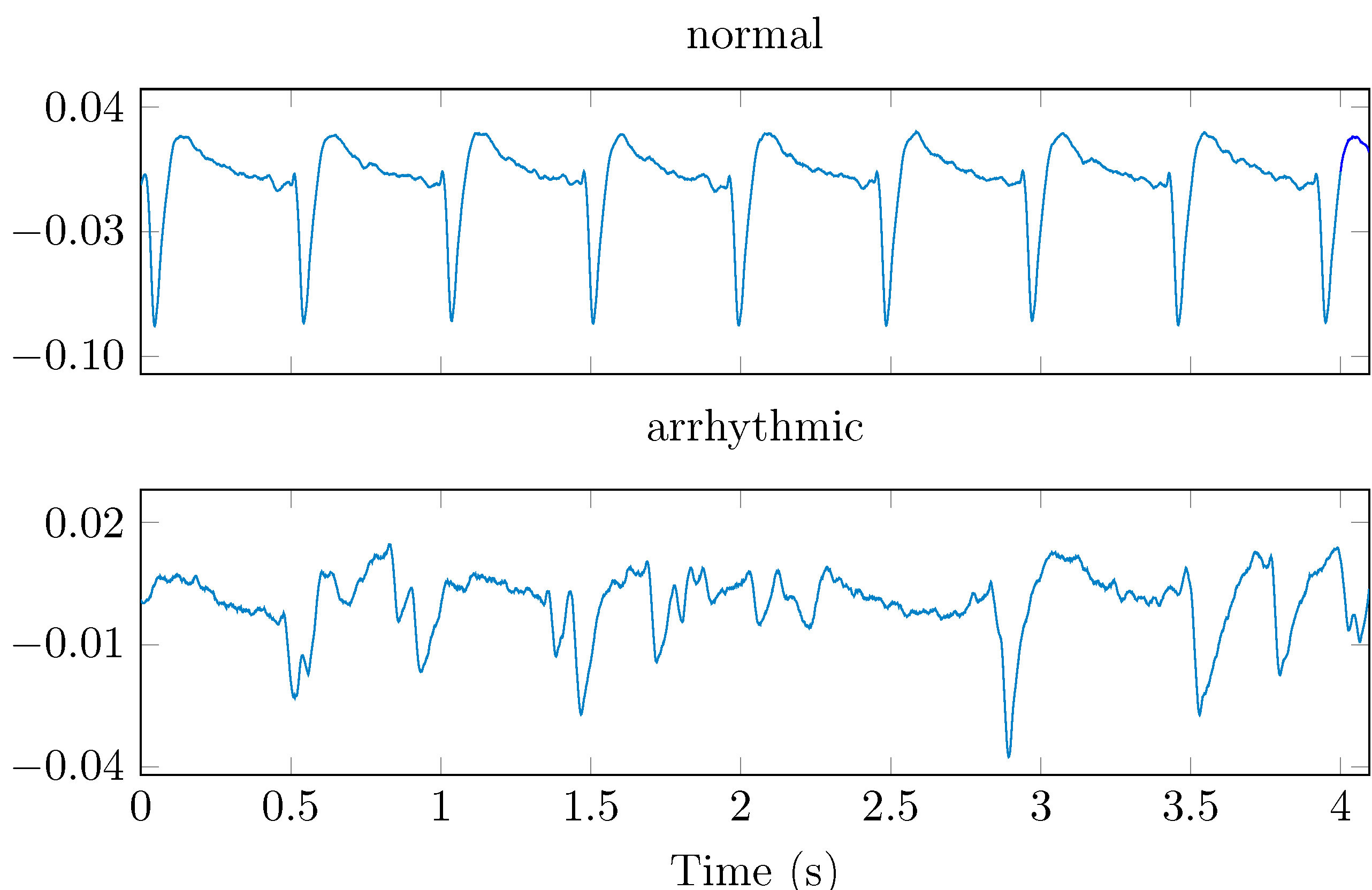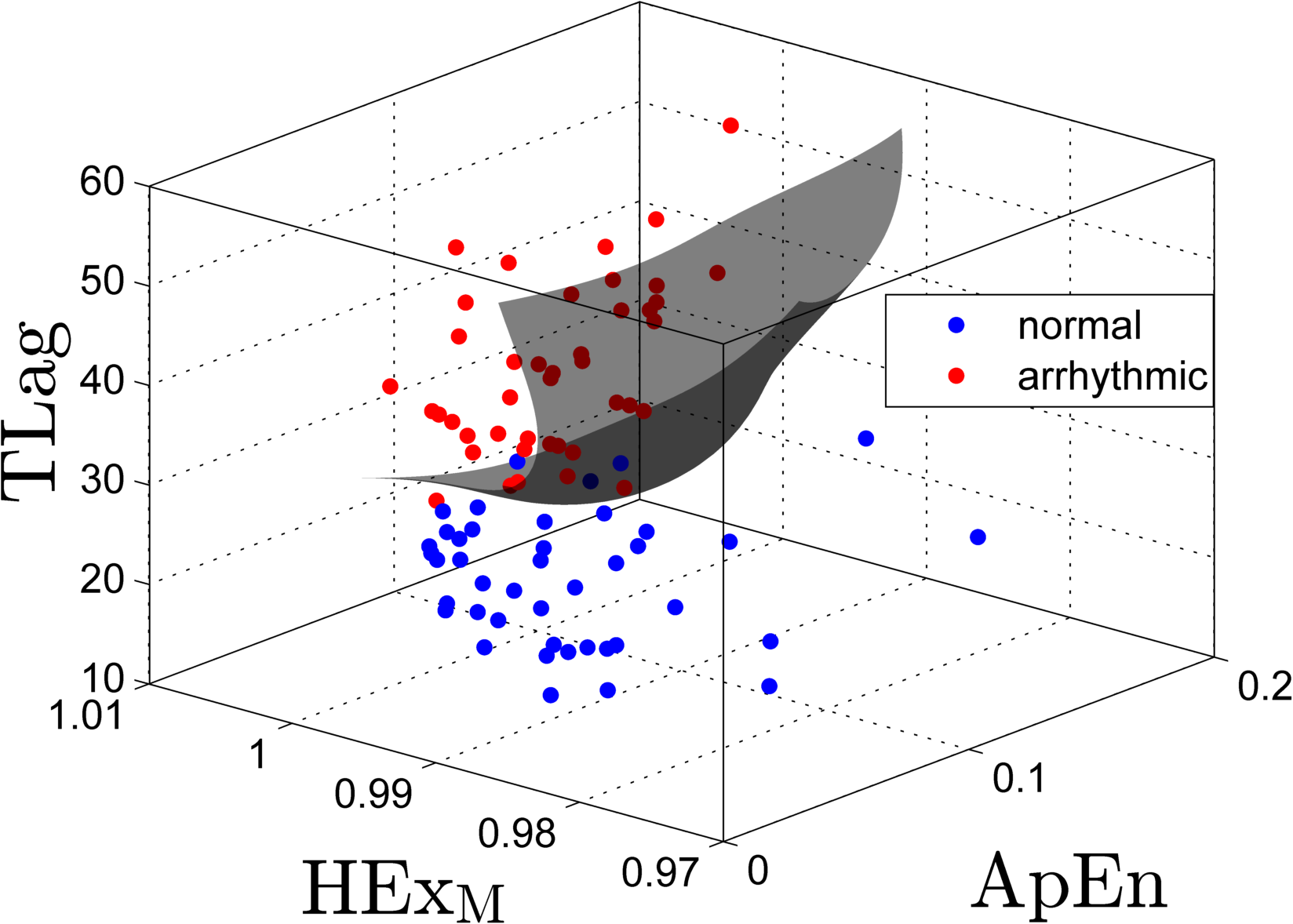Section: New Results
Classification of Cardiac Arrhythmia in vitro based on Multivariate Complexity Analysis
Participant : Binbin Xu.
Background: The animal models (in vitro or in vivo) provide an excellent tool to study heart diseases, among them the arrhythmia remains one of the most active research subjects. It can be induced or treated by drugs, electrical stimulation, hypothermia etc. Problems: However, the inducing or treating effects in cardiac culture often happened long after the initial applications or in some relatively short time windows. So, it is necessary to capture and classify rapidly the signal change. Human-assisted monitoring is time-consuming and less efficient. An automatic classification method for real-time use would be useful and necessary. Methods: Since electrocardiological signals are features by repetitive or similar patterns reflecting the intrinsic information about the patient (or culture), analyzing these patterns could help not only to monitor the status's change but also to evaluate/explore the physiologic control mechanisms. Methods based on complexity analysis are of considerable interest in this case. Aims: Compare different complexity analysis methods in order to find the most appropriate ones to discriminate the normal cardiac signals from arrhythmic ones acquired from a cardiac cell culture in vitro. The selected features are then used by a SVM classifier.
|
Results: Among the six complexity analysis methods, Time Lagging (TLag) method allowed obtaining the best discrimination index (normal vs. arrhythmic, -value, 9e-23). The proposed Modified Hurst Exponent (HExM) showed better performance than original Hurst Exponent with well-improved -value (from to 2e-9). The Approximate Entropy (ApEn), Sample Entropy (SampEn) and Detrended Fluctuation Analysis gave good discrimination ratio but with larger -values (at order ). Combination of TLag, HExM and ApEn can provide a more robust classifier and allow monitoring and classifying in an automatic way the electrical activities' changes in the cardiac cultures.
Publication: [28] .




